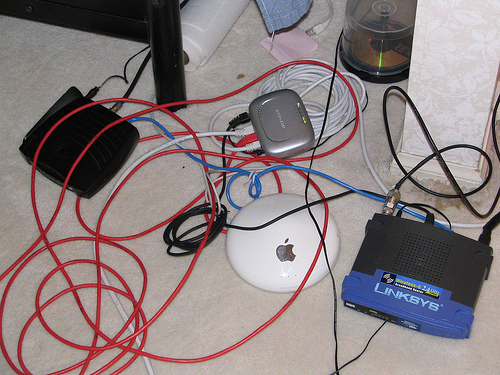Wired Or Wireless? Which Is The Better Network

In the world of Local Area Networks (LAN), there are two choices: Wired and Wireless. Each comes with its particular pros and cons, and we’re going to dive in and explore the good and bad of both. Before we begin in earnest, let’s review some definitions.
A Local Area Network is a network of linked computers that have equal access to data and other resources. It could be anything from an elaborate setup in a big office, to a family’s personal computers linked up at home.
A wired LAN connects computers and workstations via Ethernet cables, hubs, routers, switches, and adapters.
A wireless LAN (also called WLAN) relies on wireless routers, access points, and adapters connecting each machine in the network without the need for cables.
First off, wired networks are extremely reliable. Wires don’t tend to wear out, though there’s always the small chance that something breaks at the connecting points. Next, you can’t beat a wired network for security. If your network is completely hard-wired, there’s little to no chance of an unauthorized person getting in. Of course, passwords are essential to complete the security picture.
Wired components are relatively low-cost, and many broadband routers come with their own built-in configurable firewalls.
Finally, wired performance is exceptional, and ideal for heavy bandwidth users. Wired connections reach speeds of up to 1000 Mbps when using Gigabit Ethernet.
Wires. There, we’ve said it. Specifically, cables. Cables get underfoot, they need to be run through walls, ceilings, and floors. Whenever you bring in a new device, that’s another cable that needs to be run. Cables also can get loose (think of people tripping over them), and is the most common source of network failure.
Far and away the greatest advantage of wireless is the fact that you can add more devices to the network with little to no effort. Anyone who’s had friends come over and bring their laptops with them knows how easy it is to allow them access to your home WLAN.
Coming up close behind the ease of expandability is the fantastic mobility that WLANs offer. You can set up your work station anywhere within the range of the network, and not be tied down to one place. If you’re working off a tablet or even a smart phone, that portability really shines. It’s the best network for BYOD (Bring Your Own Device) setups.
Wireless networks enable users to take advantage of awesome things like virtual desktops, a solution which is highlighted in the article “How Virtual Desktops Can Allow Anywhere, Anytime Access For Your Business”.
It’s not just easy for authorized users to access the network; it’s also easy for hackers, strangers, and other undesirables to gain access. You need to make sure that your security, via Wired Equivalent Privacy (WEP) and Wi-Fi Protected Access (WPA) is always in force. More security issues are addressed in “Wired vs. Wireless Lans: What You Need To Know,” for those who are very security conscious.
Interference and inconsistent connections are also major wireless headaches. LANs use radio signals, and can suffer interference from electronic devices. That interference also results in occasional losses of connection.
Finally, if you want speed, don’t look at WLAN. No matter what kind of hype you hear, right now, nothing beats wired in terms of speed.
In the question of which network is best, the answer comes down to the individual and their needs. As you can see, both types have good things to offer, and drawbacks that can cause real headaches. Perhaps the question that should be asked before trying to decide which is better is “What do you want to use your network for?”
